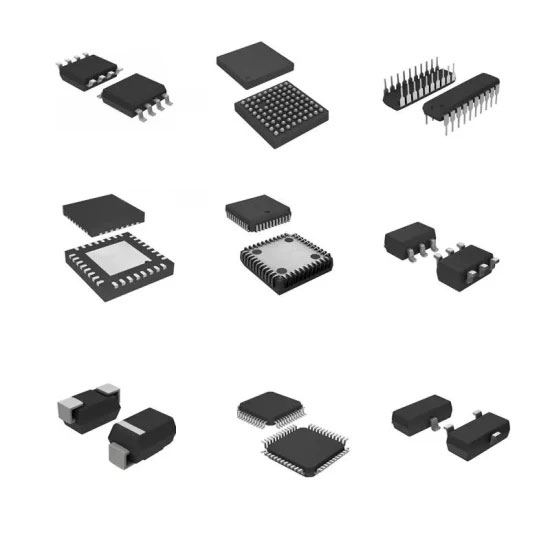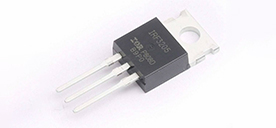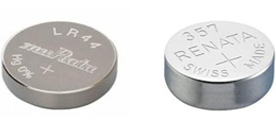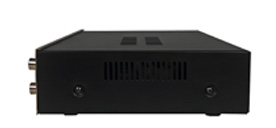Audio Special Purpose Integrated Circuits: Market Insights and Future Trends
2023/11/10 11:12:08
Views:
In an era of rapid technological development,Audio Application Specific Integrated Circuits (SPICs)Standout for their critical role in the advancement of sound technology. Not only are these complex components integral to numerous applications, from the smartphones in our pockets to the cars we drive, but they also define what we experience
Market analysis
Current trend analysis of the audio integrated circuit (IC) market reveals several key developments:
-
Growing demand driven by smart devices: With the popularity of smartphones\smart watches\headphones and other wearable devices, the demand for high-performance audio ICs continues to grow. These devices require compact\high-performance audio ICs to provide better user experience
-
The rise of wireless technology: The popularity of wireless audio devices, such as Bluetooth headsets and wireless speakers, is driving the demand for low-power/high-performance audio ICs. These products require long battery life and excellent sound quality, which has a significant impact on the design and development of audio ICs.
-
High-fidelity sound quality: Consumers have increasingly higher requirements for sound quality, which has promoted the development of high-fidelity audio ICs. More products supporting high-resolution audio and complex sound processing technologies have appeared on the market.
-
Development of car audio systems: As car entertainment systems become more and more advanced, the demand for high-quality audio ICs is also increasing. Modern cars are increasingly adopting advanced audio systems to provide a better listening experience.
-
Integration of Artificial Intelligence and IoT: Audio ICs are being integrated with Artificial Intelligence (AI) and Internet of Things (IoT) technologies to provide smarter and adaptive audio solutions. This includes features such as speech recognition and ambient sound processing.
-
Environmental and sustainability impacts: With the emphasis on environmental protection, the market is increasingly favoring audio IC products that use environmentally friendly materials and are more energy efficient.
Overall, the audio IC market is undergoing rapid changes, and constant technological innovation and changes in consumer demands are driving the development of this market.
Technological development
The technological development of audio integrated circuits (ICs) has experienced significant changes and innovations, which are mainly reflected in the following aspects:
-
The transition from analog to digital: Audio IC technology has evolved from the original analog processors to complex digital processors. This transformation has greatly improved the accuracy and flexibility of audio processing. Digital audio processors (DSP) are now able to handle complex algorithms and provide clearer
-
High fidelity and high resolution audio: Advances in technology enable audio ICs to support higher sampling rates and wider dynamic ranges, thereby achieving high-fidelity (Hi-Fi) sound quality. This is particularly important for professional audio equipment and high-end consumer electronics.
-
Low power consumption and compact design: With the popularity of mobile devices, the design of audio ICs tends to be smaller in size and consume less energy. This not only helps extend the battery life of the device, but also makes the device more lightweight and portable.
-
Increased integration: Modern audio ICs increasingly integrate additional functions such as sound recognition\environmental noise suppression and 3D sound effects processing. This multi-functional integration increases the value and application scope of the product.
-
Intelligence and connectivity: Audio ICs are being integrated with artificial intelligence (AI) and Internet of Things (IoT) technologies to achieve smarter audio processing and control. For example, audio processing optimized through AI can automatically adjust audio output according to the user's listening preferences.
-
New materials and advanced manufacturing technologies: In order to meet the market demand for audio ICs with smaller size, higher performance and lower power consumption, the industry is adopting new materials and advanced manufacturing technologies, such as microelectromechanical systems (MEMS) technology and 3D integrated circuits.
In summary, the technological development of audio ICs not only improves sound quality and performance, but also makes these chips more intelligent and adaptable to future technological trends. As technology continues to advance, audio ICs will continue to play an important role in a variety of applications.
Application areas
Audio integrated circuits (ICs) play an important role in many fields. The main application areas include:
-
Consumer Electronics: This is one of the most widespread application fields of audio ICs. In devices such as smartphones, tablets, laptops, smart watches and headphones, audio ICs are used to process sound signals and provide high-quality audio output. Smart speakers and other homes
-
Professional audio equipment: Audio ICs are also very important in the professional audio industry, including recording studio equipment\professional-grade sound systems\mixers and audio interfaces, etc. These applications usually require higher sound quality and more complex audio processing capabilities.
-
Automobile industry: With the development of car entertainment systems, audio ICs play an increasingly important role in car audio systems. They not only provide high-quality audio playback, but also support complex sound processing functions, such as 3D sound effects and noise suppression.
-
Audio solutions for specific environments: In some specific environments, such as industrial\medical equipment and public safety systems, audio ICs are used to process special sound signals. In these applications, audio ICs need to meet specific performance and durability requirements.
-
communication device: In telephones, walkie-talkies and other communication equipment, audio ICs are used for sound capture, amplification and clear transmission.
-
Wearable device: With the development of wearable technology, such as fitness tracking devices and smart watches, audio ICs are also used in these devices to support functions such as voice commands and calls.
-
Games and virtual reality: In game consoles and virtual reality (VR) devices, audio ICs are used to provide an immersive audio experience and enhance user interaction and entertainment experience.
Audio ICs have a very wide range of applications. With the development of technology, they play an increasingly important role in our lives, constantly improving the quality of our audio experience.
Design and manufacturing challenges
The design and manufacturing of audio integrated circuits (ICs) faces multiple challenges, mainly including the following aspects:
-
Integration and performance requirements: With the development of technology and changes in market demand, audio ICs need to integrate more and more functions while maintaining or improving their performance. This requires designers to achieve higher integration within a limited chip space while ensuring that each
-
Power Consumption and Thermal Management: Especially in portable and mobile devices, low-power design is crucial to extend battery life and reduce energy consumption. In addition, effective thermal management is also very important, as high power consumption may lead to overheating issues, affecting device performance and
-
Size reduction and material innovation: As device sizes continue to shrink, audio ICs also need to become smaller. This is not only a physical size challenge, but also requires the use of new materials and manufacturing technologies to achieve miniaturized designs while maintaining or improving performance.
-
High-fidelity audio processing: As the market's requirements for sound quality increase, audio ICs need to support high-fidelity audio processing. This requires advanced design and manufacturing technology to achieve high-resolution and low-distortion audio output.
-
Versatility and compatibility: Audio IC needs to be compatible with a variety of different technologies and devices, while integrating multiple functions, such as digital to analog conversion (DAC)\analog to digital conversion (ADC)\sound processing and amplification, etc.
-
Environmental and Sustainability Considerations: When designing and manufacturing audio ICs, there is an increasing need to consider environmental impact. This includes using more environmentally friendly materials, reducing waste, and improving energy efficiency.
-
market adaptability: Audio IC designers need to constantly track market trends and changes in consumer demands to ensure that their products can adapt to the rapidly changing market environment.
Overall, the design and manufacturing of audio ICs is an ever-changing and challenging field that requires designers and manufacturers to continuously innovate and adapt to new technologies and market demands.
Core technology components
The core technical components of audio integrated circuits (ICs) mainly include the following key parts:
-
Digital audio processor (DSP): DSP is one of the most core parts of the audio IC, responsible for efficiently processing complex audio signals. They can perform various audio processing tasks, such as signal mixing\effects processing\sound synthesis and noise and echo elimination.
-
audio amplifier: Audio amplifiers are used to enhance the strength of audio signals so that they can drive speakers or other output devices. These amplifiers must maintain the clarity and authenticity of the signal while minimizing distortion and interference as much as possible.
-
Digital to Analog Converter (DAC): DAC converts digital audio signals into analog signals. In audio playback equipment, this is a critical step because devices such as speakers and headphones usually require analog signals.
-
Analog to Digital Converter (ADC): ADC performs the opposite function of DAC, it converts analog audio signals into digital format. This is very important in recording and sound capture equipment.
-
Noise suppression and echo cancellation technology: These technologies are used to improve audio quality and remove unnecessary background noise and echo. In communication equipment and advanced audio systems, these functions are crucial.
-
Audio interface and connectivity: Audio ICs often contain a variety of interface and connectivity options to allow compatibility with different input and output devices. This includes analog input/output\digital audio interfaces (such as I2S\TDM) and possibly wireless connectivity technologies.
-
Power management: Power management is particularly important for audio ICs in portable and mobile devices. Designers need to ensure that the IC still maintains high performance in low-power modes to extend battery life.
Together, these core technology components form the basis of audio ICs, allowing them to provide high-quality audio processing and output in a variety of applications. With the development of technology, these components are becoming more efficient, multifunctional, and intelligent.
Environmental and Sustainability Impact
The environment and sustainability play an increasingly important role in the design and manufacturing of audio integrated circuits (ICs). The following are the main influencing factors and considerations:
-
Impact of environmental regulations on design: As the world pays more attention to environmental protection, audio IC manufacturers must comply with increasingly stringent environmental regulations. These regulations may involve restricting the use of hazardous substances (such as the RoHS directive), improving energy efficiency standards, and promoting the use of recyclable materials.
-
sustainable production process: During the production process of audio ICs, reducing energy consumption, waste generation and carbon emissions has become an important goal. Manufacturers are exploring more efficient production technologies, such as the use of renewable energy and improved manufacturing processes, to reduce the environmental impact of the entire production process
-
Green materials and recycling technology: When selecting materials for audio ICs, more and more manufacturers are beginning to consider using recyclable or biodegradable materials. In addition, the entire life cycle of the product is also considered when designing, including disassembly and disassembly at the end of the product's life.
-
Product efficiency and longevity: When designing audio ICs, improving energy efficiency and extending product life are also important aspects to achieve sustainable development. More efficient products not only reduce energy consumption, but also reduce electronic waste generated by frequent replacement of equipment.
-
Reduce size and weight: By reducing the size and weight of audio ICs, not only can the materials required be reduced, but energy consumption and carbon emissions during transportation can also be reduced.
-
User awareness and market demand: As consumers and businesses pay more attention to environmental protection issues, the market demand for environmentally friendly products is also growing. This has pushed audio IC manufacturers to take more active measures in environmental protection and sustainability.
In summary, the impact of environmental and sustainable development is shaping the future of the audio IC industry, prompting manufacturers to focus on reducing negative impacts on the environment while maintaining technological innovation.
Key case studies
In the field of audio integrated circuits (ICs), key case studies can provide important insights and help us understand market dynamics and technology development trends. The following are two typical cases:
Successful product case analysis
- Audio IC for Apple AirPods: Apple AirPods are one of the most successful wireless headphone products on the market, and their success is partly due to their use of advanced audio ICs. These ICs not only provide a high-quality audio experience, but also enable other features such as touch controls and Siri voice assistant
Failure cases and lessons learned
- Failure of a smartphone audio IC design: Some smartphone manufacturers have made compromises in the design and manufacturing of audio ICs in order to cut costs. As a result, these phones perform poorly in terms of sound quality and durability, ultimately affecting user experience and brand reputation. This case teaches us
These two cases represent successes and failures in the audio IC field respectively, revealing the delicate balance between innovation, quality, cost control and user experience. Through these studies, we can better understand the design and market strategy of audio ICs.
future outlook
The future prospects of the audio integrated circuit (IC) field show several obvious development trends, indicating that this industry is about to usher in more innovation and transformation:
-
Integration of emerging technologies: It is expected that audio ICs will more deeply integrate artificial intelligence (AI) and Internet of Things (IoT) technologies in the future. AI can be used to optimize sound processing and provide personalized listening experiences, while IoT technology will enable audio ICs to be used in a wider range of applications.
-
Industry collaboration and ecosystem development: As the complexity of technology increases, it is expected that there will be more industry cooperation, including cooperation between chip manufacturers\audio technology companies and terminal equipment manufacturers. Such cooperation contributes to the rapid development of innovation and the deployment of new technologies
-
Evolution of regulations and standards: As technology develops and new applications emerge, industry standards and regulations will continue to evolve to adapt to new challenges. This may include more stringent requirements for audio quality\security\interoperability and environmental impact.
-
Higher quality audio experience: As consumers' requirements for sound quality increase, the development of audio ICs will focus more on providing high-resolution and high-fidelity audio output. This will involve more advanced signal processing technology and better hardware design.
-
Sustainable development and environmentally friendly design: Environmental protection and sustainability will continue to be an important consideration in the development of audio ICs. We can foresee more products using environmentally friendly materials\low energy consumption designs and easy recycling.
-
Integration of virtual reality and augmented reality: With the development of virtual reality (VR) and augmented reality (AR) technologies, audio ICs may play a greater role in these fields, providing a more immersive and realistic audio experience.
Overall, the future of the audio IC industry will be diversified and technology-driven, integrating multiple advanced technologies to meet growing market demands and changing consumer expectations.
in conclusion
The long-term prospects facing the audio integrated circuit (IC) industry are positive and challenging. As technology continues to advance, especially in the convergence of digital audio processing\artificial intelligence and the Internet of Things, the industry is expected to further expand its application scope and
To sum up, the audio IC industry not only continues to innovate technically, but also shows a positive attitude in meeting consumer expectations, promoting sustainable development and promoting industry cooperation. In the future, we can expect to see more high-quality products
Related Information
-
-
Phone
+86 135 3401 3447 -
Whatsapp






